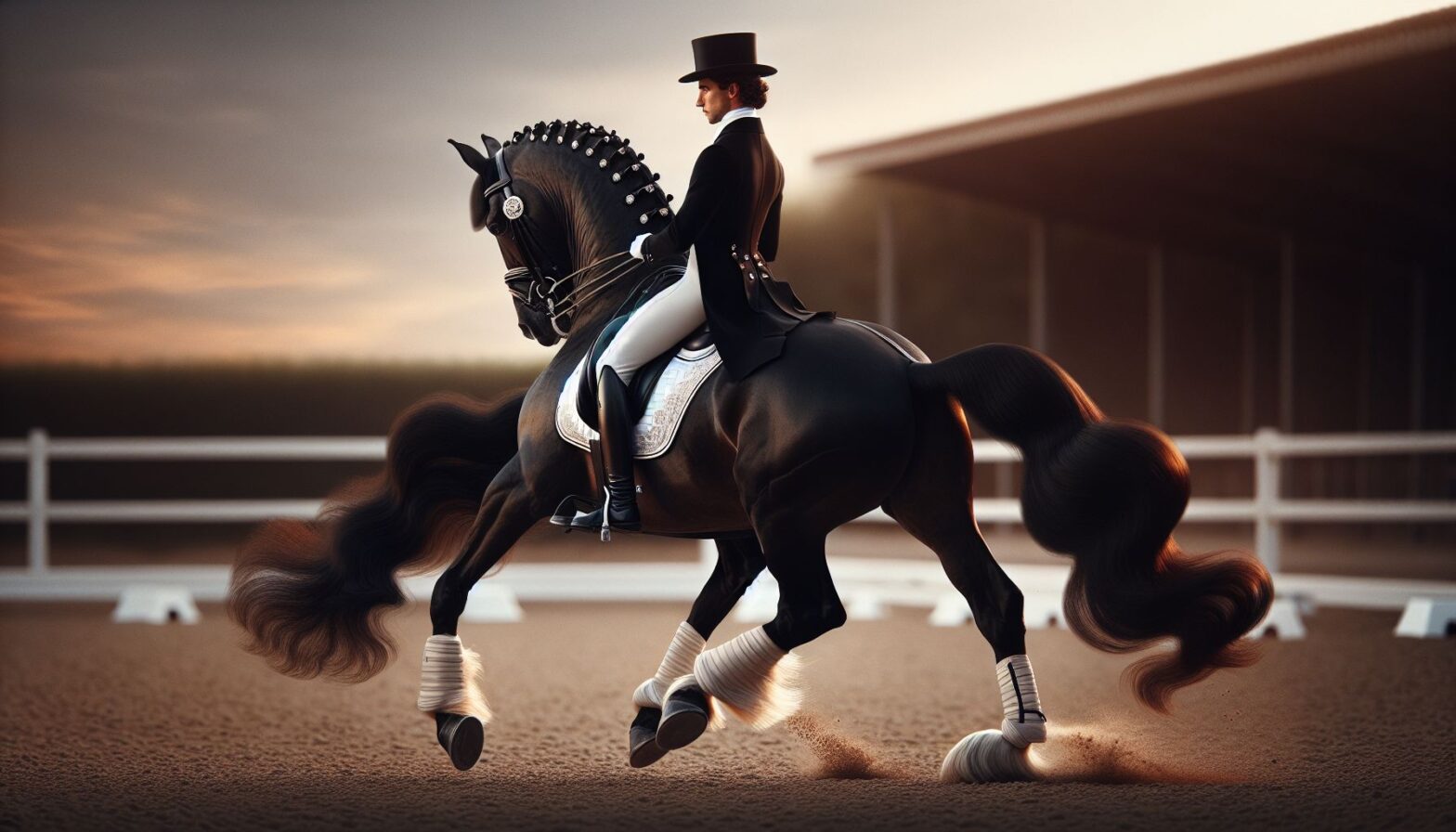Have you ever seen the elegant and graceful movements of a horse and rider performing dressage? It’s like watching a beautiful dance, where every step is perfectly choreographed and executed with precision. Dressage is often referred to as “horse ballet,” and for good reason. It requires skill, patience, and a deep understanding between the horse and rider.
Dressage is a discipline that originated in the military, where soldiers needed to train their horses to perform precise movements for battle. Over time, dressage evolved into a sport and an art form, where riders compete in competitions to showcase their horse’s ability to perform a series of predetermined movements with finesse and grace.
At its core, dressage is about communication between the horse and rider. The rider uses subtle cues from their seat, legs, and hands to communicate with the horse and guide them through a series of movements. It’s a partnership based on trust, respect, and mutual understanding.
In a dressage test, riders are judged on the accuracy, correctness, and effectiveness of their movements. Judges look for straightness, balance, impulsion, and rhythm in the horse’s performance. Each movement is scored on a scale from 0 to 10, with deductions for mistakes or inaccuracies.
One of the key movements in dressage is the dressage test, a predetermined sequence of movements that riders must perform in front of judges. Tests vary in difficulty, from basic beginner levels to advanced levels for experienced riders. Riders are scored based on their accuracy, execution, and overall performance of the test.
Dressage is often compared to figure skating or gymnastics, where athletes must perform precise movements with poise and control. But what sets dressage apart is the partnership between the horse and rider. It’s not just about the technical execution of movements, but also about the connection and harmony between the two.
To excel in dressage, riders must have a deep understanding of their horse’s strengths and weaknesses. They must be able to communicate effectively with their horse and make split-second decisions to guide them through the movements. It’s a sport that requires mental focus, physical strength, and emotional intelligence.
But dressage is not just for competitive riders. It’s also a great way to bond with your horse and improve your riding skills. Even if you have no desire to compete, learning the basics of dressage can help you become a better rider and strengthen your relationship with your horse.
So, how can you get started with dressage? The first step is to find a qualified instructor who can teach you the fundamentals of dressage and help you improve your riding skills. You’ll also need to have access to a well-trained horse who is capable of performing the movements required for dressage.
Practice is key when it comes to dressage. You’ll need to spend hours in the saddle, working on your position, balance, and communication with your horse. And don’t be discouraged if you make mistakes – learning dressage is a journey, and you’ll have good days and bad days.
In conclusion, dressage is a beautiful and rewarding discipline that showcases the connection between horse and rider. Whether you’re a competitive rider or just looking to improve your riding skills, dressage offers a challenging and fulfilling experience. So grab your horse, saddle up, and start dancing!
